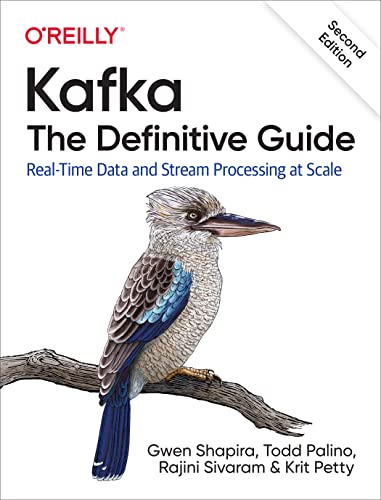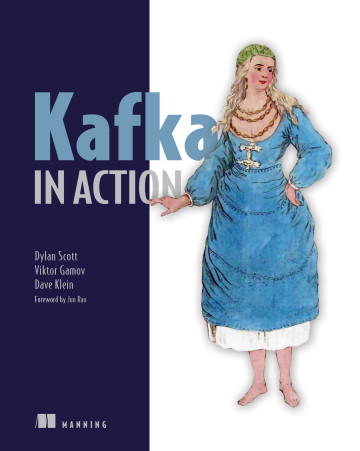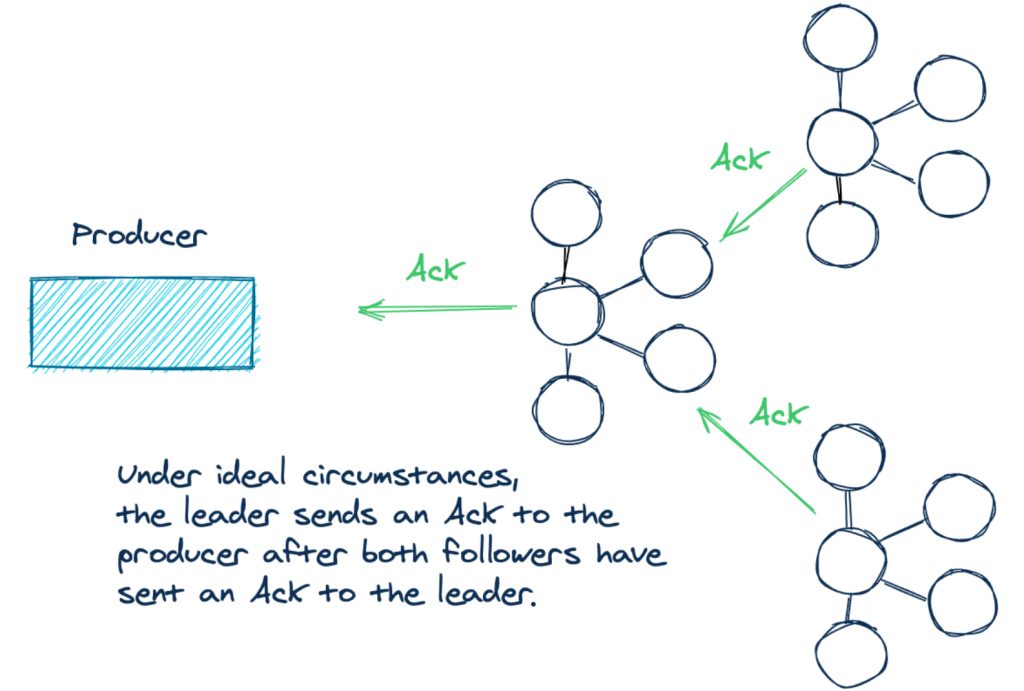我们都知道,使用Kafka Producer往Kafka的Broker发送消息的时候,Kafka会根据消息的key计算出这条消息应该发送到哪个分区。默认的分区计算类是HashPartitioner,其实现如下:
class HashPartitioner(props: VerifiableProperties = null) extends Partitioner {
def partition(data: Any, numPartitions: Int): Int = {
(data.hashCode % numPartitions)
}
}
其中numPartitions就是Tpoic的分区总数。partition函数会在kafka的getPartition函数中被调用,计算消息的分区ID。而numPartitions的数量是通过
val topicPartitionsList = getPartitionListForTopic(message) val numPartitions = topicPartitionList.size
计算得到的,getPartitionListForTopic实现如下:
private def getPartitionListForTopic(m: KeyedMessage[K,Message]):
Seq[PartitionAndLeader] = {
val topicPartitionsList =
brokerPartitionInfo.getBrokerPartitionInfo(m.topic, correlationId.getAndIncrement)
debug("Broker partitions registered for topic: %s are %s"
.format(m.topic, topicPartitionsList.map(p => p.partitionId).mkString(",")))
val totalNumPartitions = topicPartitionsList.length
if(totalNumPartitions == 0)
throw new NoBrokersForPartitionException("Partition key = " + m.key)
topicPartitionsList
}
那么问题是,如果在Kafka Producer往Kafka的Broker发送消息的时候用户通过命令修改了改主题的分区数,Kafka Producer能动态感知吗?答案是可以的。那是立刻就感知吗?不是,是过一定的时间(topic.metadata.refresh.interval.ms参数决定)才知道分区数改变的,我们来看看代码实现。
上面代码中的topicPartitionsList是通过getBrokerPartitionInfo函数获取的,其实现如下:
def getBrokerPartitionInfo(topic: String, correlationId: Int): Seq[PartitionAndLeader] = {
debug("Getting broker partition info for topic %s".format(topic))
// check if the cache has metadata for this topic
val topicMetadata = topicPartitionInfo.get(topic)
val metadata: TopicMetadata =
topicMetadata match {
case Some(m) => m
case None =>
// refresh the topic metadata cache
updateInfo(Set(topic), correlationId)
val topicMetadata = topicPartitionInfo.get(topic)
topicMetadata match {
case Some(m) => m
case None =>
throw new KafkaException("Failed to fetch topic metadata for topic: " + topic)
}
}
val partitionMetadata = metadata.partitionsMetadata
if(partitionMetadata.size == 0) {
if(metadata.errorCode != ErrorMapping.NoError) {
throw
new KafkaException(ErrorMapping.exceptionFor(metadata.errorCode))
} else {
throw new KafkaException("Topic metadata %s has empty
partition metadata and no error code".format(metadata))
}
}
partitionMetadata.map { m =>
m.leader match {
case Some(leader) =>
debug("Partition [%s,%d] has leader %d".format(topic, m.partitionId, leader.id))
new PartitionAndLeader(topic, m.partitionId, Some(leader.id))
case None =>
debug("Partition [%s,%d] does not have a leader yet".format(topic, m.partitionId))
new PartitionAndLeader(topic, m.partitionId, None)
}
}.sortWith((s, t) => s.partitionId < t.partitionId)
}
topicPartitionInfo的数据类型是HashMap[String, TopicMetadata],程序先通过topic名从topicPartitionInfo中查找是否有这个topic的元数据,如果有则直接返回;如果没有呢?则调用updateInfo(Set(topic), correlationId)函数获取该topic的元数据:
def updateInfo(topics: Set[String], correlationId: Int) {
var topicsMetadata: Seq[TopicMetadata] = Nil
val topicMetadataResponse =
ClientUtils.fetchTopicMetadata(topics, brokers, producerConfig, correlationId)
topicsMetadata = topicMetadataResponse.topicsMetadata
// throw partition specific exception
topicsMetadata.foreach(tmd =>{
trace("Metadata for topic %s is %s".format(tmd.topic, tmd))
if(tmd.errorCode == ErrorMapping.NoError) {
topicPartitionInfo.put(tmd.topic, tmd)
} else
warn("Error while fetching metadata [%s] for topic [%s]: %s
".format(tmd, tmd.topic, ErrorMapping.exceptionFor(tmd.errorCode).getClass))
tmd.partitionsMetadata.foreach(pmd =>{
if (pmd.errorCode != ErrorMapping.NoError
&& pmd.errorCode == ErrorMapping.LeaderNotAvailableCode) {
warn("Error while fetching metadata %s for topic partition
[%s,%d]: [%s]".format(pmd, tmd.topic, pmd.partitionId,
ErrorMapping.exceptionFor(pmd.errorCode).getClass))
} // any other error code (e.g. ReplicaNotAvailable)
//can be ignored since the producer does not need to
//access the replica and isr metadata
})
})
producerPool.updateProducer(topicsMetadata)
}
上面程序通过调用ClientUtils.fetchTopicMetadata函数获取topicsMetadata。如果没有遇到错误,那么就将获取到的topicsMetadata存放到topicPartitionInfo中。那么程序是如何感知当前topic的元数据发生变化,比如前面说的分区数增加了?其实主要逻辑在这里:
if (topicMetadataRefreshInterval >= 0 &&
SystemTime.milliseconds - lastTopicMetadataRefreshTime >
topicMetadataRefreshInterval) {
Utils.swallowError(brokerPartitionInfo.updateInfo(topicMetadataToRefresh.toSet,
correlationId.getAndIncrement))
......
}
这个逻辑在处理消息的时候就会被调用,如果topicMetadataRefreshInterval>=0并且当前时间减去上一次元数据更新的时间间隙大于topicMetadataRefreshInterval,则会再一次更新Tpoic的元数据,而topicMetadataRefreshInterval的值就是通过topic.metadata.refresh.interval.ms配置的。
结论:在启动Kafka Producer往Kafka的Broker发送消息的时候,用户修改了该Topic的分区数,Producer可以在最多topic.metadata.refresh.interval.ms的时间之后感知到,此感知同时适用于async和sync模式,并且可以将数据发送到新添加的分区中。下面附上topic.metadata.refresh.interval.ms参数的解释:
本博客文章除特别声明,全部都是原创!The producer generally refreshes the topic metadata from brokers when there is a failure (partition missing, leader not available...). It will also poll regularly (default: every 10min so 600000ms). If you set this to a negative value, metadata will only get refreshed on failure. If you set this to zero, the metadata will get refreshed after each message sent (not recommended) Important note: the refresh happen only AFTER the message is sent, so if the producer never sends a message the metadata is never refreshed
原创文章版权归过往记忆大数据(过往记忆)所有,未经许可不得转载。
本文链接: 【Kafka Producer是如何动态感知Topic分区数变化】(https://www.iteblog.com/archives/1618.html)







